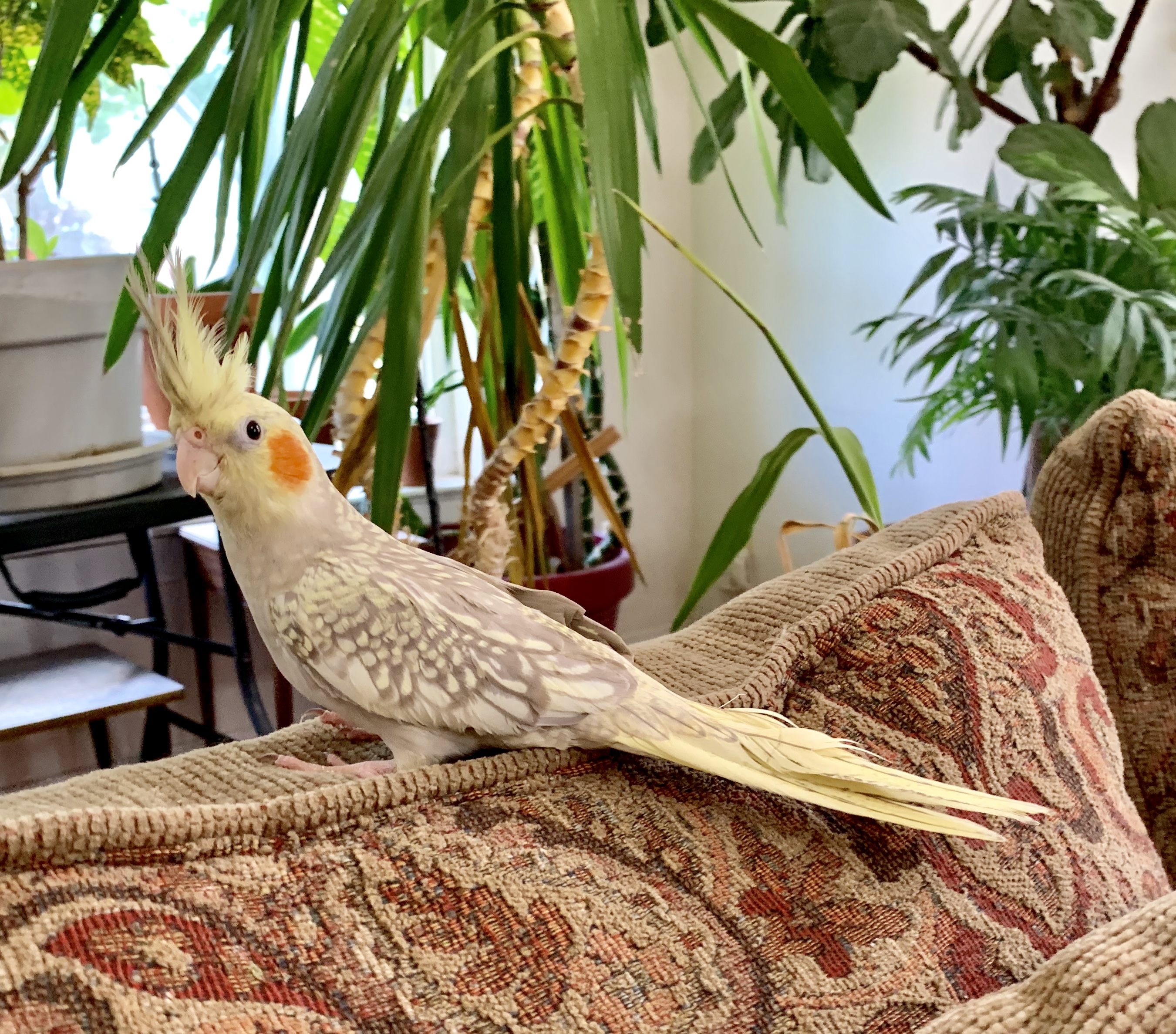Cockatiel Sounds Explained
- Cary

- Aug 23, 2019
- 4 min read

A random chirp, a warble repeated over and over, a long, drawn-out wolf whistle, a piercing squawk, intermittent chirps, an elaborate whistle serenade, a soft cheep while napping — these are all sounds pet cockatielsmake.
Like other parrots, cockatiels are natural-born communicators. In their native Australia, cockatiels live in flocks, where contact calls are crucial to alerting others in the flock if a predator is too close for comfort. No doubt, there are many other vocalizations going on in a wild cockatiel flock — from happy foraging sounds to “Yes, you can perch here,” and “Did you hear that?” chirps and squawks.
Parrots typically are most vocal at sunrise and sunset, including cockatiels. However, that doesn’t mean a pet cockatiel will not vocalize intermittently throughout the day. In fact, a happy, playful cockatiel will not check the clock to see if it is chirp or whistle time. Male cockatiels, in particular, are inclined to burst into a whistle song when the mood hits them, especially if they spy their reflection in a mirror or other reflective object like a lacquered vase; but that doesn’t mean they won’t whistle a song to just themselves or to you. Below are some common cockatiel sounds and a brief explanation of what cockatiel noises mean.

The Cockatiel Contact Call: “Where’d you go?!”
A pet cockatiel will most likely attempt to keep household members’ movements in check with contact calls. When you leave the room, your cockatiel responds with a chirp or sequence of chirps, as if to say, “Where are you going, and when will you be back?” A cockatiel’s contact calling isn’t strictly reserved for people the bird is affectionately bonded to. Even a “hands-off” cockatiel is inclined to send out a contact call from its perch spot in the cage when you leave the room. You can help put your cockatiel at ease by answering its contact call with a quick whistle back when you turn a corner out of its sight.

The Cockatiel Alarm Call: “Attention! Attention!”
A pet cockatiel might sound an alarm call if something startles it. This call is a louder, more intense chirp that continues until the bird calms down. Just about any sudden sound or movement, such as a truck rumbling down the street, a crow flying past the window, or a dog being walked on the sidewalk outside, can result in an alarm call. Inside the home, there are even more sights and sounds your cockatiel might feel the need to vocally comment on, such as when you move a chair across the room, sweep the floor, drop a dish, or the phone rings.
A Happy And Content Cockatiel
The sound of beak grinding is a telltale sign that a cockatiel is happy and relaxed. This is often accompanied by facial feathers that are fanned out over its beak and relaxed, fluffed body feathers. A sleepy cockatiel might grind its beak shortly before falling asleep.

The Cockatiel “Leave Me Alone!” Noise
An uptight cockatiel will have an uptight look — the feathers will be held tightly in — and it might also let out a quick hiss to show its disdain. One sound you don’t want to hear from your cockatiel is “hissing.” A cockatiel that feels threatened might retreat to a corner of its cage or travel carrier and hiss like a snake. This is sometimes the case with cockatiels that are not used to interacting with people, such as an unsocialized cockatiel being brought from the pet store into a new home. It is especially important to not force interaction if the cockatiel is frightened. Instead, allow the cockatiel time to adjust to its new environment.
Cockatiel “Ready For Bed” Signal
A cockatiel might send out a bedtime call, such as some attention-grabbing chirps, when it is ready for some shuteye. It is your cockatiel’s way of reminding you to go to bed, too.
Cockatiel Inquisitive Chirp
A cockatiel that is unsure of something might emit a single ”What was that?” chirp, as if it is not quite sure what to make of the situation. This might be your cockatiel’s way of asking, “What do you think of that sound?”

Talking ’Tiels
Like most parrots, cockatiels are also capable of talking. A cockatiel’s vocabulary is generally not as extensive as other parrots, such as African greys and Amazon parrots, but some can be taught to say a few words or phrases, such as “Hello,” “Pretty bird,” “I’m a good bird,” etc. Male cockatiels are more inclined to speak than females. The key to getting a cockatiel to talk is to repeat a specific word or phrase and then moving on to another word/phrase once it masters it.
Your cockatiel vocalizes to communicate with you. Just as you would check to see why the dog is barking, you should also check to see why your cockatiel is squawking, especially if it sounds urgent. Is there a cat outside the window? Did something fall near its cage? And if your cockatiel is by itself in another room, its chirps might be its way of reminding you, “Hey, I’m over here … talk to me!”







Comments